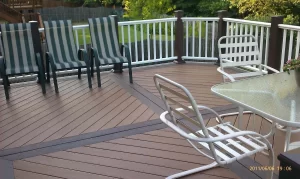
A Retaining Wall is an essential part of a retaining system to create a firm base for the soil around your house. A retaining wall can also be used in landscape designs, and it is often located between two edges of a property – such as a side yard and backyard. Retaining Walls are typically constructed from the earth, boulders, concrete blocks, or slabs.
Whenretaining walls, many people are unaware of the need to maintain them properly to avoid soil erosion and damage. Unlike the expense of erecting a concrete wall, you must know how to install and repair a retaining wall so that it will be sound and beneficial for your property.
First, when installing a retaining wall, examine site conditions; check the existing topography and tree growth patterns in an area with thick vegetation around it. Sets and slopes can also affect where you place your structure. Since a retaining wall must withstand strong ground movements, you must have proper calculations so that placement is not off by even one inch.
The actual process of building a retaining wall can be done in several different ways. Some contractors begin with the excavation of earth, while others will choose to use concrete blocks as the base. In most cases, you will need at least three feet of the earth, while two and a half feet is ideal to ensure sturdy support.
If you plan on using concrete blocks as the base, you must build a level foundation first by pouring cement or placing gravel into the ground so that it is flat and even. Make sure your wall is well-drained because any water flowing down towards the house can erode your foundation and seep into your basement or crawl space.
Depending on the width and height of your retaining wall, you might need to have special steel rods installed. Grading out the area is also crucial to install the correct size of blocks and concrete forms. The length of your retaining wall will also determine the type of form you need. If you plan on building a short wall, then a slab form might be all that is required. For taller walls, then you will probably need a panel form instead.
If your retaining wall does not have any openings, then perhaps it could just look like a plain concrete block wall. On the other hand, if you want your wall to be designed with an opening of some sort, then it will take a lot more effort on your part. To be reinforced efficiently, you will need to add a layer of concrete, rebar, and mesh to your form.
When designing the front of your concrete block retaining wall, you might want to consider adding curves or arches. Arches are not just aesthetically pleasing; they are also functional in allowing water to flow easily into the soil around them. When you have finished designing your retaining wall and installing it, maintain it regularly so that it does not deteriorate.
When it comes to repairing work, you should always make sure that you seal any cracks around your retaining wall. A simple filling of caulk will do the job. If the crack is a bit larger, then you can fix it using steel mesh and concrete. In addition to needing regular repairs, the retaining wall must be monitored regularly to keep it secure. This means that if there are any signs of movement or shifting, you should call a contractor immediately so they can come out and confirm what is going on.
The entire time a retaining wall is in place, it will need routine maintenance to remain sturdy and secure.







